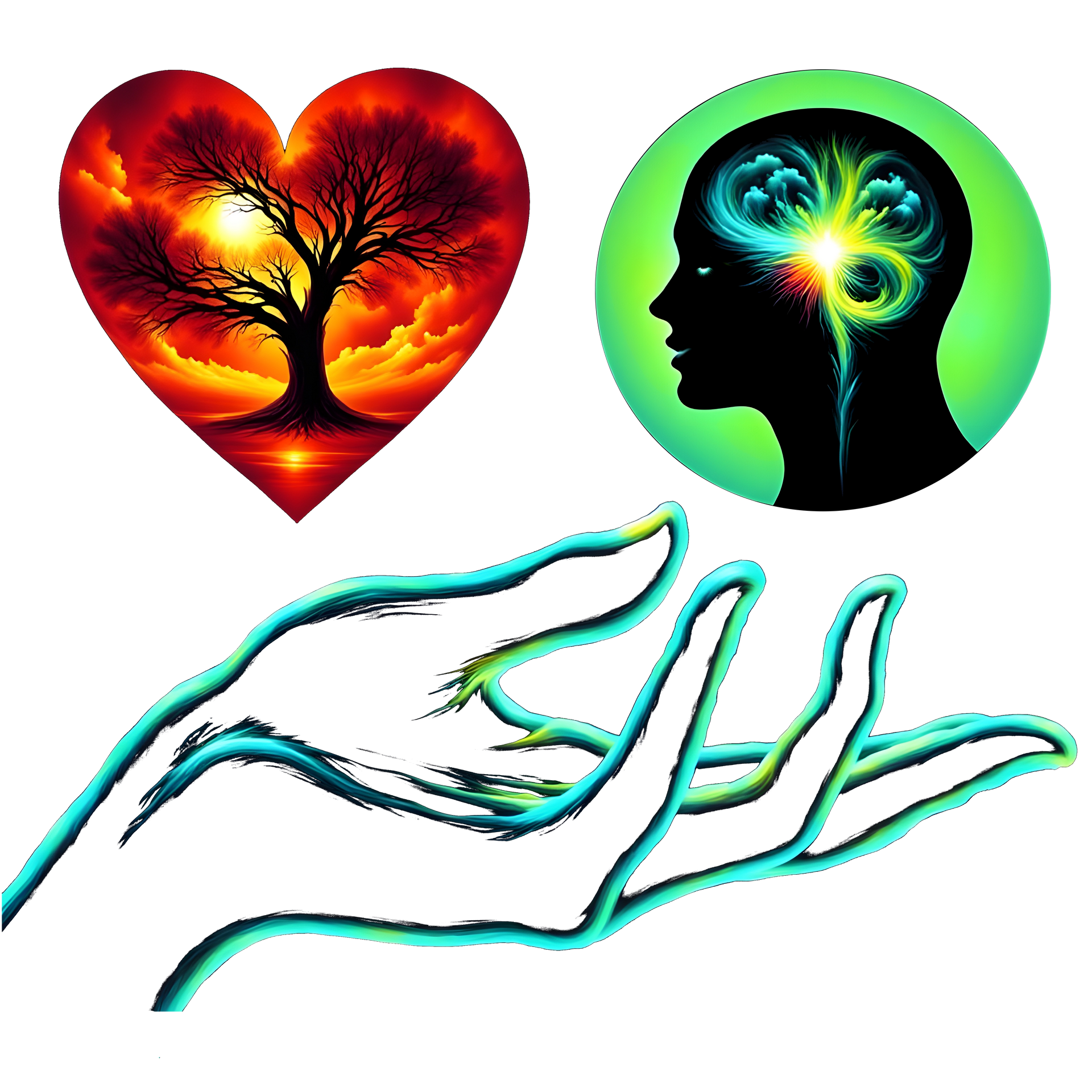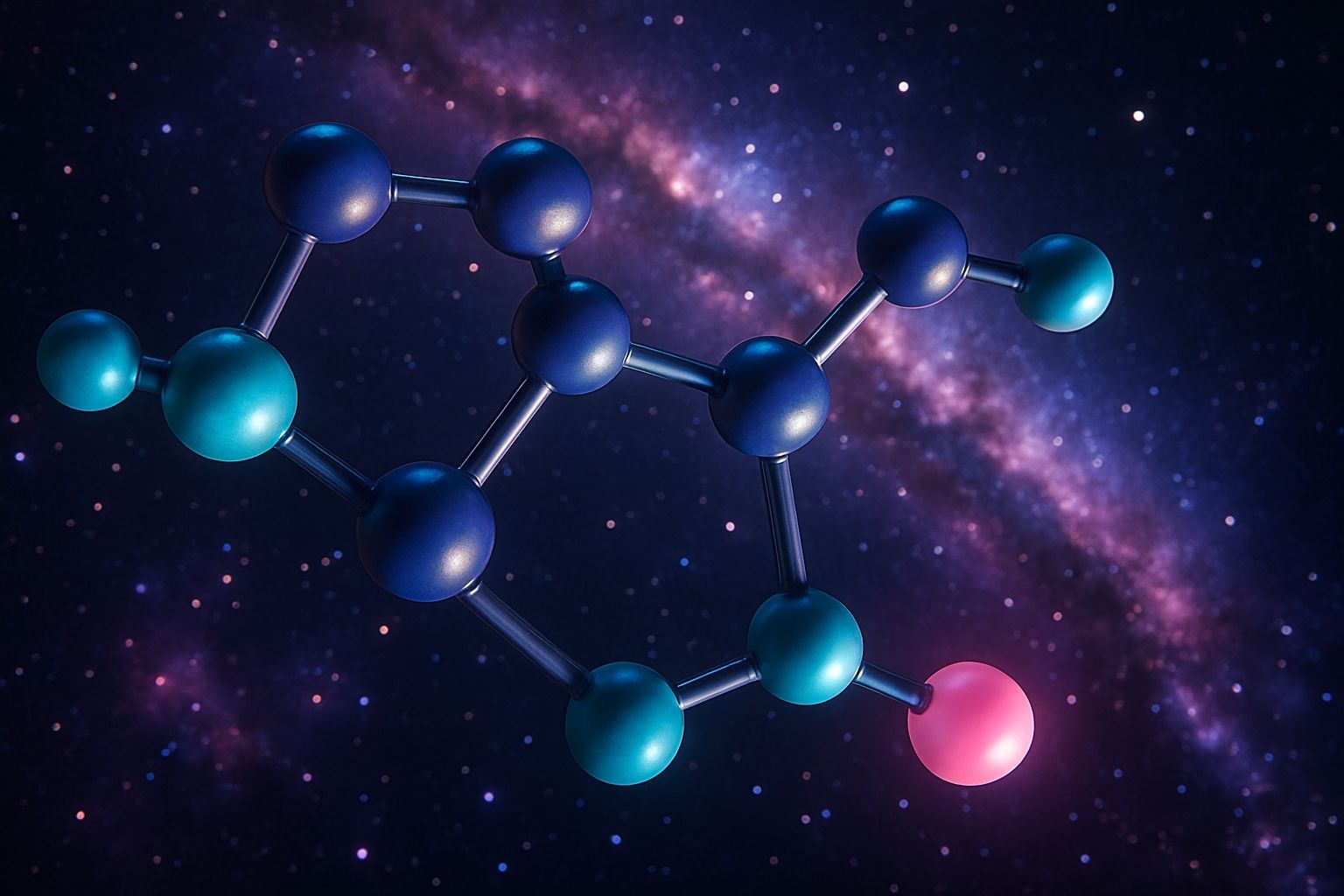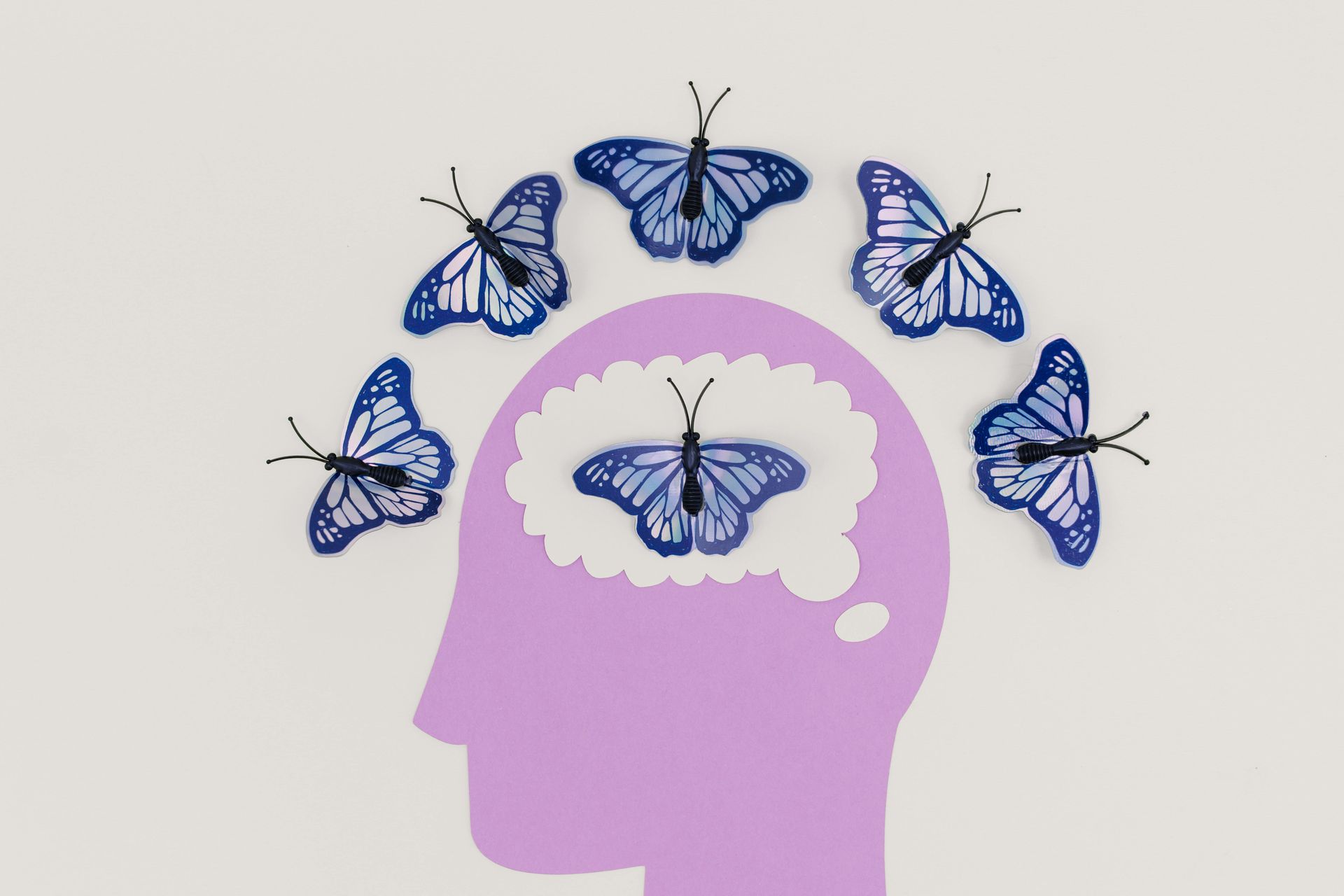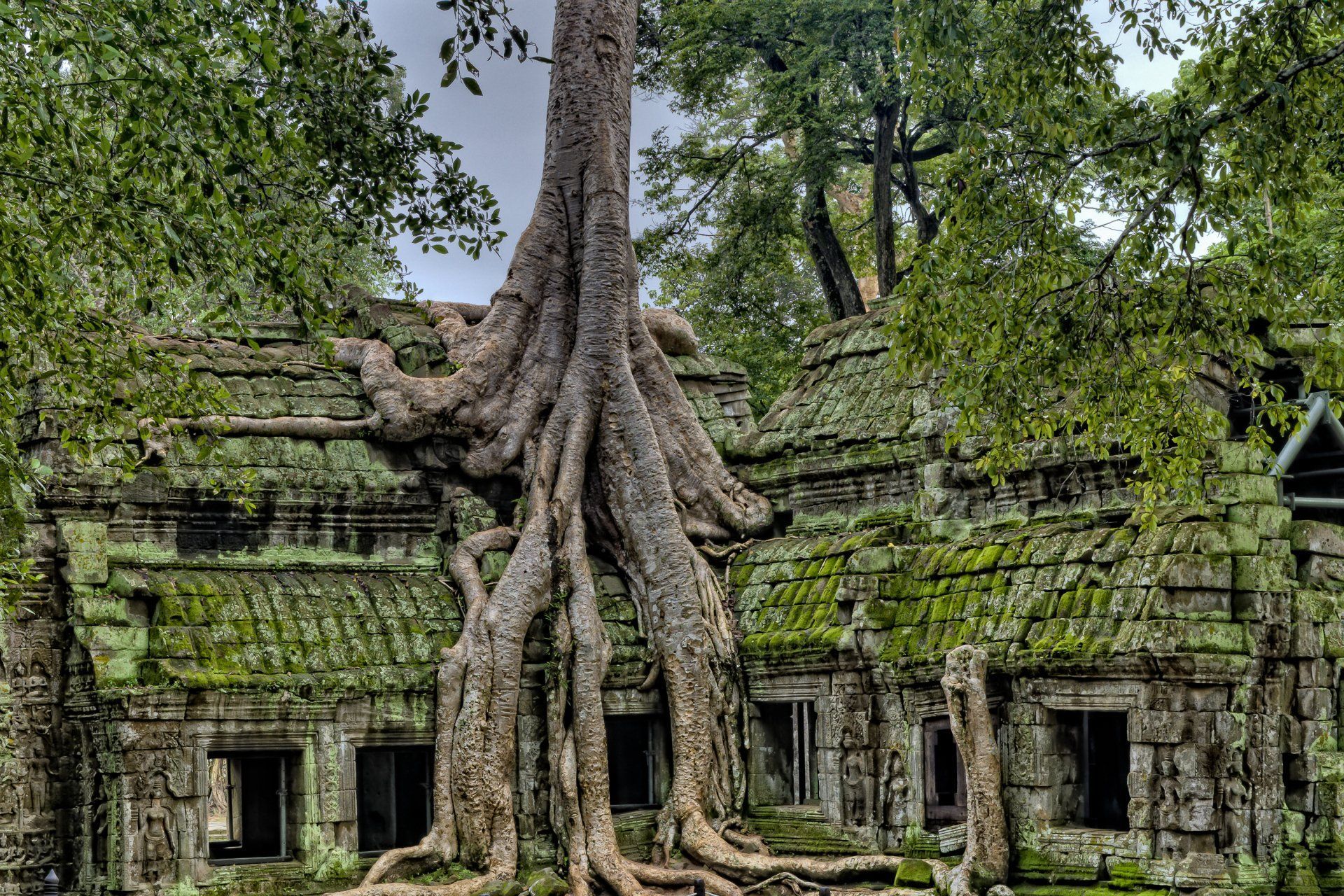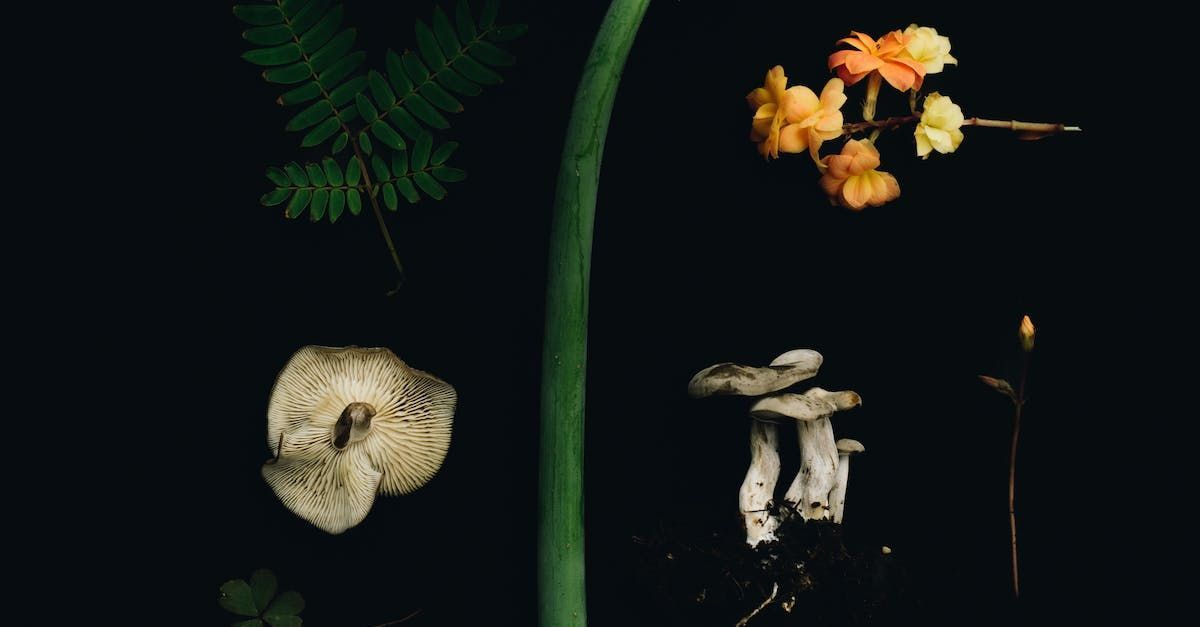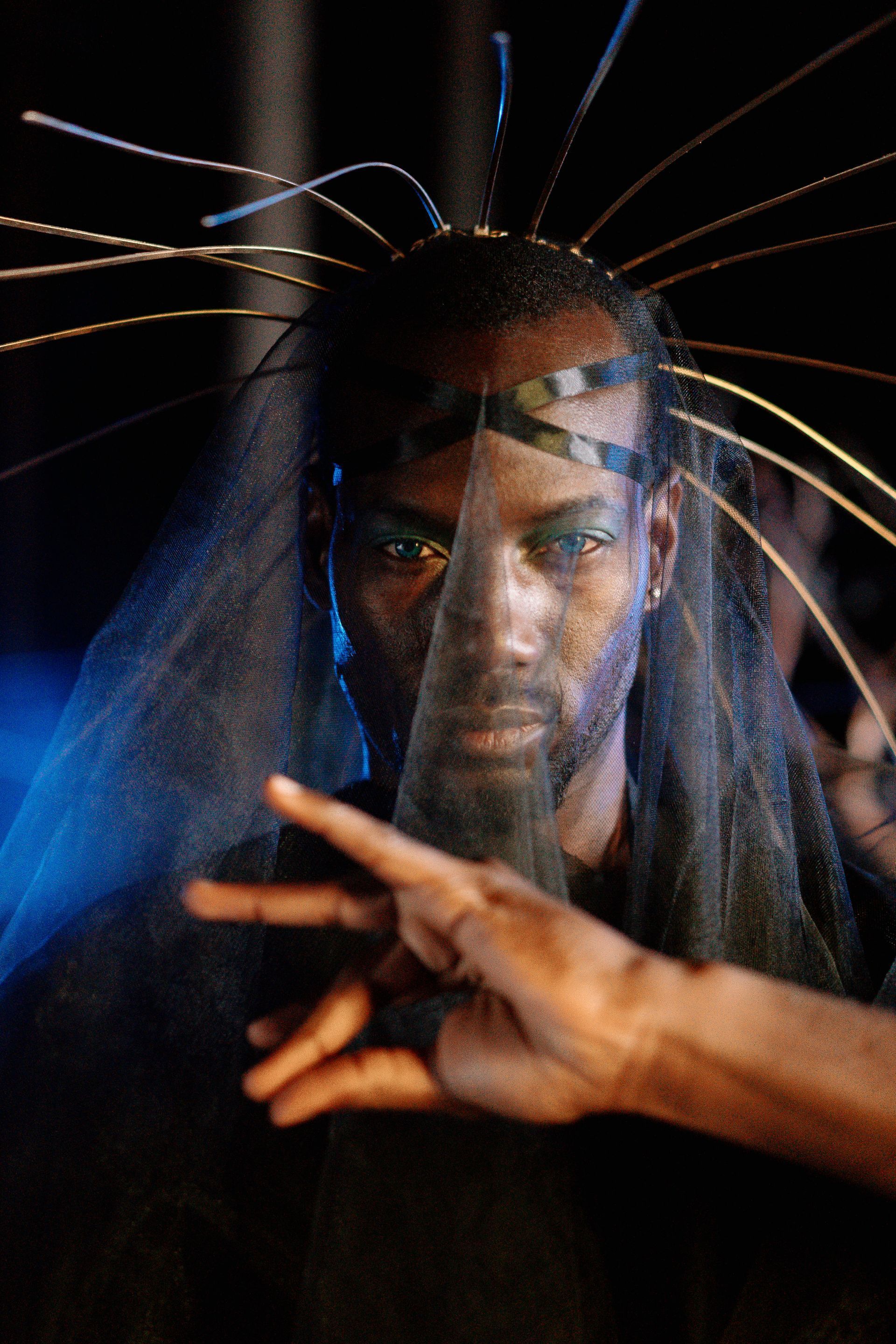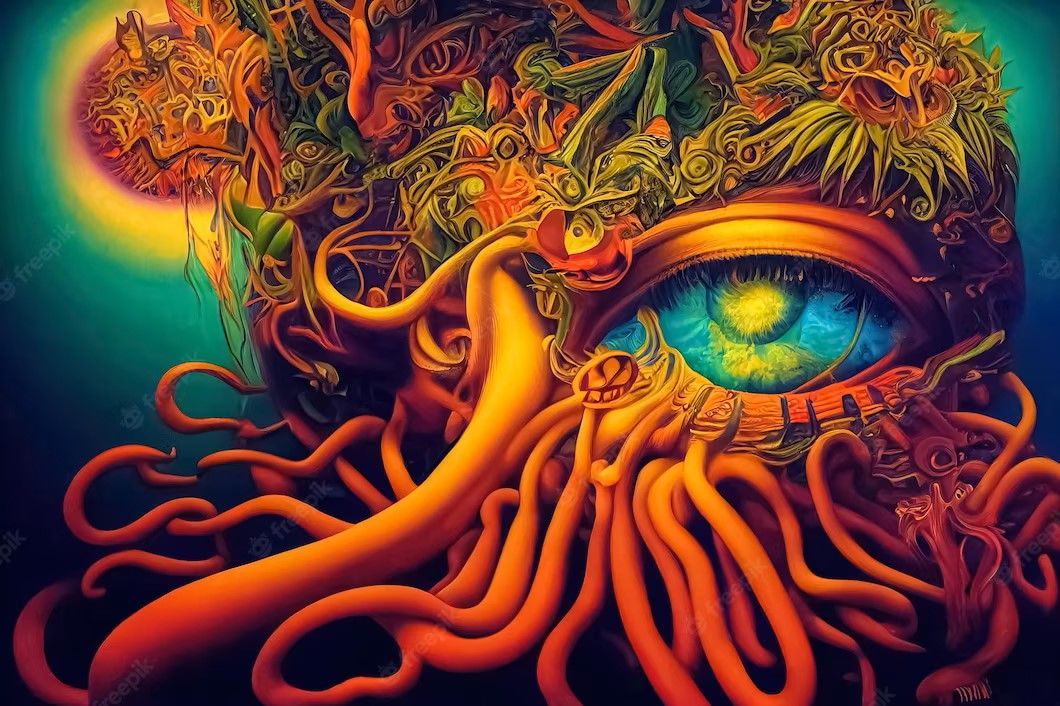Psychedelics and Neuroplasticity
Why Healing Is About More Than Just Chemicals
Despite thousands of scientific studies exploring how psychedelics support mental health, the systems meant to protect and serve us still treat them like fringe experiments. But these compounds offer something extraordinary—not just treatment, but prevention, reconnection, and a chance to evolve.
Instead of waiting until the mind breaks down, what if we used psychedelics like we use the spa—for renewal, emotional hygiene, and creative clarity?
What Psychedelics Actually Do to the Brain (In Layman’s Terms)
Psychedelics like psilocybin, LSD, DMT, and ayahuasca are more than just “mind-altering” substances. They act like a key, unlocking the brain’s potential to rewire itself, heal old wounds, and spark profound insights. This ability to reshape the brain—known as neuroplasticity—is at the heart of their therapeutic promise. But how exactly do they work? Let’s break it down into six key mechanisms, blending science with the human experience, to show how psychedelics can transform the way our brains function.
1. Softening the Default Mode Network (DMN): Quieting the Inner Narrator
Your brain has a network called the Default Mode Network (DMN), a group of regions that hums along when you’re daydreaming, reflecting on yourself, or replaying memories. Think of it as your internal narrator—the voice that says, “This is who I am,” or “This is how the world works.” It’s tied to your ego, your sense of identity, and the mental filters that shape how you see reality.
Psychedelics, like psilocybin and LSD, dial down the DMN’s activity. When this happens, the brain’s usual patterns of communication loosen up, allowing regions that don’t typically “talk” to connect in new ways. This can feel like a temporary dissolution of the self—often described as ego-transcendence. Suddenly, the rigid story you’ve told yourself about your life softens, making space for fresh perspectives. For someone stuck in cycles of depression or trauma, this can be a game-changer, allowing them to process pain with less judgment and more compassion.
Science Spotlight: A 2016 study using fMRI showed that LSD reduces connectivity within the DMN while increasing global brain connectivity, correlating with experiences of ego dissolution. Another study in 2024 found that psilocybin massively disrupts functional connectivity across the cortex, creating a “desynchronization” that persists for weeks, potentially explaining its therapeutic effects.
2. Strengthening Left-Right Brain Integration: Bridging Logic and Intuition
The brain’s two hemispheres—left and right—handle different aspects of thinking. The left is often associated with logic, language, and analysis, while the right leans toward creativity, intuition, and emotional processing. The corpus callosum, a thick bundle of nerve fibers, connects these hemispheres, allowing them to work together. Psychedelics appear to enhance this cross-talk, leading to a more integrated brain.
Regular psychedelic use has been linked to a denser corpus callosum, suggesting better communication between the brain’s logical and creative sides. This integration can boost emotional intelligence, spark imaginative problem-solving, and help you approach life’s challenges with a blend of reason and intuition.
Science Spotlight: While direct studies on corpus callosum density are limited, a 2015 study on ayahuasca users found differences in brain structure, including thicker midline regions (where the corpus callosum resides), in regular users compared to controls. Additionally, a 2024 meta-analysis showed psychedelics enhance connectivity between the DMN and the Theory of Mind network, which involves both hemispheres and supports social cognition.
3. Releasing Stored Emotions: Unlocking the Serotonin System
Psychedelics like DMT and psilocybin interact strongly with the brain’s serotonin system, particularly the 5-HT2A receptor. This interaction triggers a cascade of neurochemical changes that can unlock emotions buried deep in the subconscious. Trauma, grief, or fear often get “stuck” in the body and brain when it wasn’t safe to process them at the time. Psychedelics create a biological opening, allowing these emotions to surface, be felt, and ultimately be released.
This process can feel intense—like crying for the first time in years or laughing with a lightness you forgot was possible. By engaging the serotonin system, psychedelics help rebalance emotional regulation, leaving you with a sense of clarity and emotional freedom that can last long after the experience.
Science Spotlight: A 2021 review highlighted that psychedelics’ agonism of 5-HT2A receptors leads to increased glutamate release and activation of neuroplastic pathways, which may facilitate emotional processing. Another study on ayahuasca showed it modulates serum BDNF levels, linked to emotional regulation, after a single dose.
4. Forging New Neural Pathways: Rewiring the Brain for Change
When psychedelics reduce DMN activity and boost connectivity across the brain, they create a unique window of opportunity. The brain becomes more flexible, like clay softened by heat, allowing it to form new neural pathways. These pathways are like new roads in the brain, enabling different regions to communicate in ways they didn’t before. This rewiring supports lasting changes in behavior, thought patterns, and emotional responses.
Science Spotlight: A 2018 study demonstrated that psychedelics like psilocybin and LSD promote structural and functional neural plasticity, including dendritogenesis and synaptogenesis (new dendrite and synapse formation) in cortical neurons. A 2022 study further confirmed psilocybin induces rapid and persistent growth of dendritic spines in the frontal cortex of mice, supporting new neural pathways.
5. Boosting Growth Factors and Rebalancing Receptors: Healing from Within
Psychedelics don’t just rearrange existing connections—they help the brain grow new ones. They increase levels of Brain-Derived Neurotrophic Factor (BDNF), a protein that acts like fertilizer for neurons, promoting their growth and survival. Higher BDNF levels support the creation of new neurons (neurogenesis) and strengthen existing ones, particularly in areas like the prefrontal cortex and hippocampus, which are often impaired in depression or trauma.
Additionally, psychedelics help rebalance receptor systems, especially serotonin and glutamate receptors, which can become dysregulated by chronic stress or mental health conditions. This restoration creates a healthier neural environment, supporting mood stability and cognitive flexibility.
Science Spotlight: A 2021 systematic review found that a single dose of psychedelics increases BDNF expression, leading to rapid changes in neuroplasticity at molecular, neuronal, and synaptic levels. Another study showed psilocybin decreases 5-HT2A receptor density in the pig brain, suggesting receptor rebalancing as a mechanism for its effects.
6. Creating Transformational Meaning: The Power of Insight and Connection
Psychedelics aren’t just about biology—they’re deeply tied to meaning-making. The vivid insights, symbols, and emotions that arise during a psychedelic experience can reframe how you see yourself and your life. This isn’t just a “trip”; it’s a chance to rewrite your inner narrative.
When paired with the right set and setting—like a supportive community or a skilled facilitator—these experiences become even more powerful. Being truly seen and held in vulnerability amplifies the healing, weaving together neurological, emotional, and existential transformation.
Science Spotlight: A 2024 review noted that psychedelics’ effects on self-awareness, including interoception and autobiographical memory, are linked to changes in the DMN and salience network, fostering profound psychological shifts. Clinical trials, like those in 2022, show psilocybin-assisted psychotherapy enhances mystical experiences, which correlate with better therapeutic outcomes for addiction and depression.
Why This Matters
Psychedelics don’t just “fix” the brain—they unlock its potential to heal itself. By softening rigid patterns, forging new connections, and creating space for emotional and existential breakthroughs, they offer a holistic approach to mental health. Whether it’s quieting the DMN, boosting BDNF, or fostering a sense of connection, these substances work on multiple levels to create lasting change. As research grows, we’re learning that psychedelics aren’t just a tool for “tripping”—they’re a pathway to transformation, grounded in science and amplified by human connection.
Why This Isn’t Mainstream (Yet)
There are now more than 1,000 peer-reviewed studies on psychedelics and mental health indexed in PubMed. Highlights include:
- Psilocybin for depression, with results rivaling top antidepressants
- MDMA for PTSD, with 67% of participants no longer qualifying for a PTSD diagnosis
- Long-term improvements in anxiety, addiction, and even existential distress near end-of-life
Still, most psychedelic use remains heavily restricted. When clinical use is finally approved, it will likely be reserved for treatment-resistant cases, overlooking the greater potential: preventive care, growth, and mental optimization.
Psychedelics as Preventive Mental Health Care
Just as we’ve normalized meditation, breathwork, and therapy, we can also integrate psychedelics as tools for maintenance, not just crisis.
We brush our teeth daily. We go to the sauna, take vitamins, unplug from screens. What if we also made space—once a year or so—for a full cognitive and emotional reset?
With safe guidance, the psychedelic journey becomes a mirror, a compass, and a bridge—helping us reconnect with what matters most before we burn out.
What Makes a Psychedelic Retreat Truly Supportive?
At Vine of the Soul Retreats, we craft experiences that combine:
- Science-backed protocols
- Skilled integration and emotional safety
- Small groups to ensure individual care
- A non-dogmatic approach that honors your own truth
We focus on helping you build meaning and clarity. Every element is designed to support your inner intelligence—with practical tools to bring insights back into daily life.
This isn’t just about what happens in ceremony. It’s about how you emerge—more grounded, connected, and creatively alive.
Curious to Explore?
If you're drawn to psychedelic healing but want something grounded, intelligent, and truly transformative, we invite you to learn more.
Explore our retreat programs, or reach out with questions. Because your growth doesn’t need to wait for rock bottom. It can begin from curiosity, vision, and the simple desire to evolve.
References
Carhart-Harris, R. L., et al. (2016). Neural correlates of the LSD experience revealed by multimodal neuroimaging. PNAS.
Siegel, J. S., et al. (2024). Psilocybin desynchronizes the human brain. Nature.
Bouso, J. C., et al. (2015). Long-term use of psychedelic drugs is associated with differences in brain structure and personality in humans. ScienceDirect.
Delli Pizzi, S., et al. (2024). The relationship between the default mode network and the theory of mind network as revealed by psychedelics. ScienceDirect.
Inserra, A., et al. (2021). Neural mechanisms underlying psilocybin’s therapeutic potential. PMC.
Kuypers, K. P. C. (2021). Psychedelics and neuroplasticity: A systematic review. Frontiers in Psychiatry.
Ly, C., et al. (2018). Psychedelics promote structural and functional neural plasticity. Cell Reports.
Preller, K. H., et al. (2024). Alterations in brain network connectivity and subjective experience induced by psychedelics. Frontiers in Psychiatry.
Halberstadt, A. L., & Geyer, M. A. (2024). Brain networks, neurotransmitters, and psychedelics: Towards a neurochemistry of self-awareness. Current Neurology and Neuroscience Reports.
